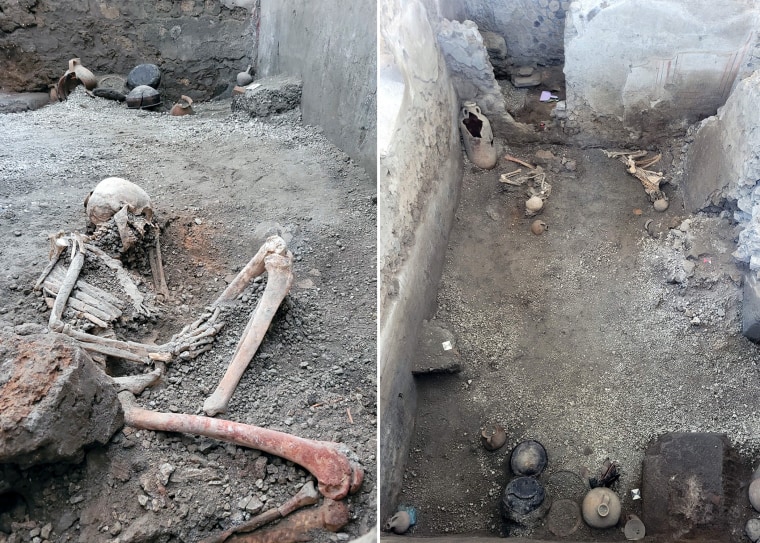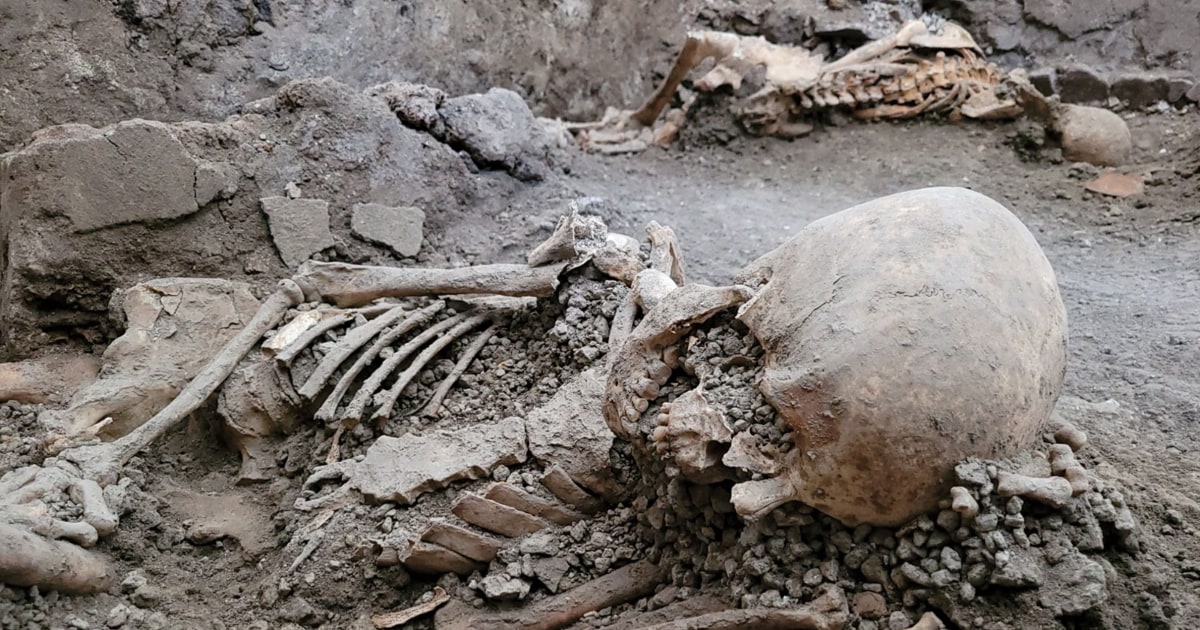Two newly discovered skeletons in the doomed Roman city of Pompeii show that the ancient world’s most famous volcanic eruption also posed a lesser-known threat: earthquakes.
The Italian Ministry of Culture revealed on Tuesday the bodies of two men, both probably in their 50s, who died in an earthquake triggered by the catastrophic volcanic eruption of Mount Vesuvius in AD 79.
The bodies were found covered with masonry from a collapsed wall; closer examination showed that they died from the impact, their bones crushed.
«Modern excavation techniques help us better understand the inferno that completely destroyed the city of Pompeii over two days, killing many inhabitants,» said Gabriel Zuchtriegel, a German archaeologist and director of the Pompeii Archaeological Park.
The eruption lasted for more than 24 hours and unleashed the power of thousands of nuclear bombs on surrounding Roman cities and communities.
Pyroclastic surges, where hot ash and lava rush down the side of a volcano like an avalanche traveling at more than 50 mph, destroyed nearly everything in its path.
So fierce was this wall of destruction that fragments of ash were found between the bones of the two men’s bodies, according to cutting-edge scientific methods that can determine the process of events leading up to the victim’s death in recent years. seconds.
But the new methods show that the couple were likely two of many people in the area who died from the devastating earthquakes that struck along with the eruption of Vesuvius.
Zuchtriegel and other archaeologists wrote in an online journal, «Park Archeological of Pompeii,» that they had to remove layers and layers of lapilli, tiny bits of ash and volcanic material, to find the bodies. The ash and rock fragments are estimated to have fallen at a rate of 220 pounds per 10 square feet, over 18 hours, they said.
The excavation team for the Insula dei Casti Amanti, or House of the Chaste Lovers, also found eight Roman containers, amphorae, propped against a pit, exactly where they were left nearly 2,000 years ago.
Pompeii, about 14 miles southeast of present-day Naples, was home to about 13,000 people. Both Pompeii and neighboring Herculaneum were favored spas for wealthy Romans, and both were left in ruins.
However, the place where the two men were discovered was not a grand palace, but an ordinary place that was undergoing renovation days after a previous earthquake in a period known for its intense seismic activity.
“This house was not particularly luxurious, it was more of a workplace with lots of objects like amphorae, pots, and they were doing lime work,” Zuchtriegel said.
“There were amphoras with water to plaster the walls. We see here a city in transformation that was trying to recover but then with the eruption everything is crushed in just two days of hell.

Archaeologists estimate that much of the buildings and bodies engulfed by Vesuvius in 79 AD. C. are still buried and undiscovered.
The Pompeii site was not rediscovered until the 16th century and has become a major tourist hotspot ever since: a $115 million European Union-funded project is underway to uncover more of its secrets.
«The discovery of these two skeletons shows us that we still have to study a lot, do more excavations to get everything that is still there.» [hiding] in this immense treasure,» Italian Culture Minister Gennaro Sangiuliano said in a statement.
Earlier this year, an opulent house in Pompeii opened after 20 years of restoration. In 2020, an archaeologist discovered the Roman equivalent of a fast-food joint: a frescoed thermopoly, or hot drinks counter, that would have catered to wealthy tourists.

